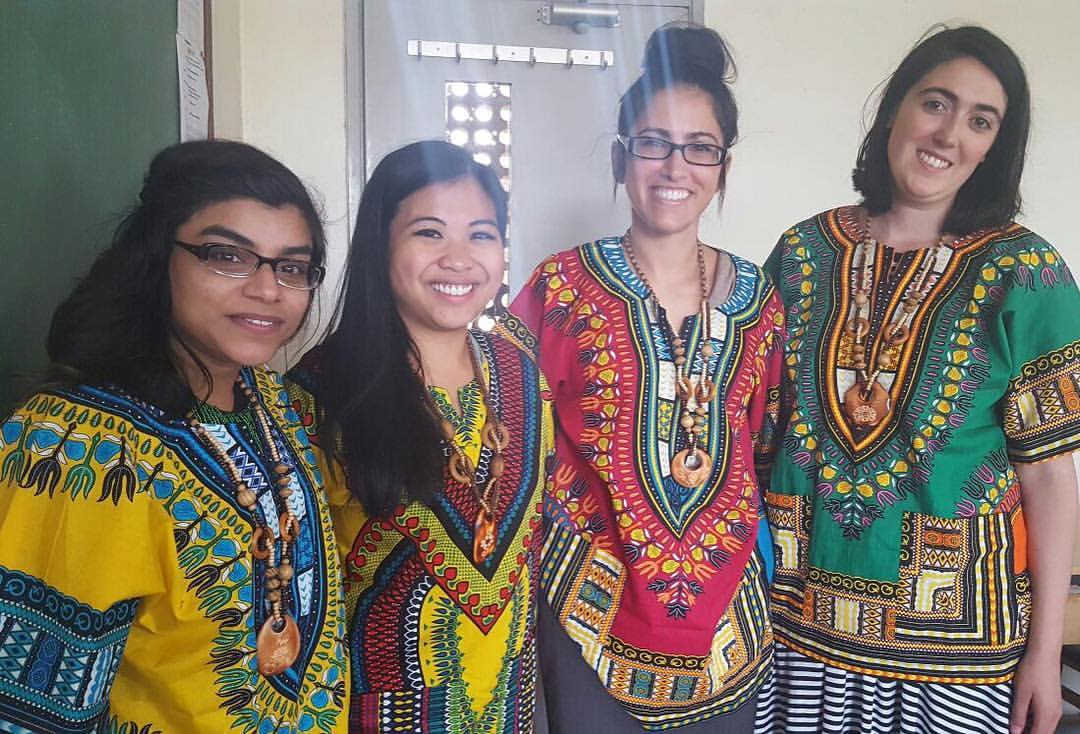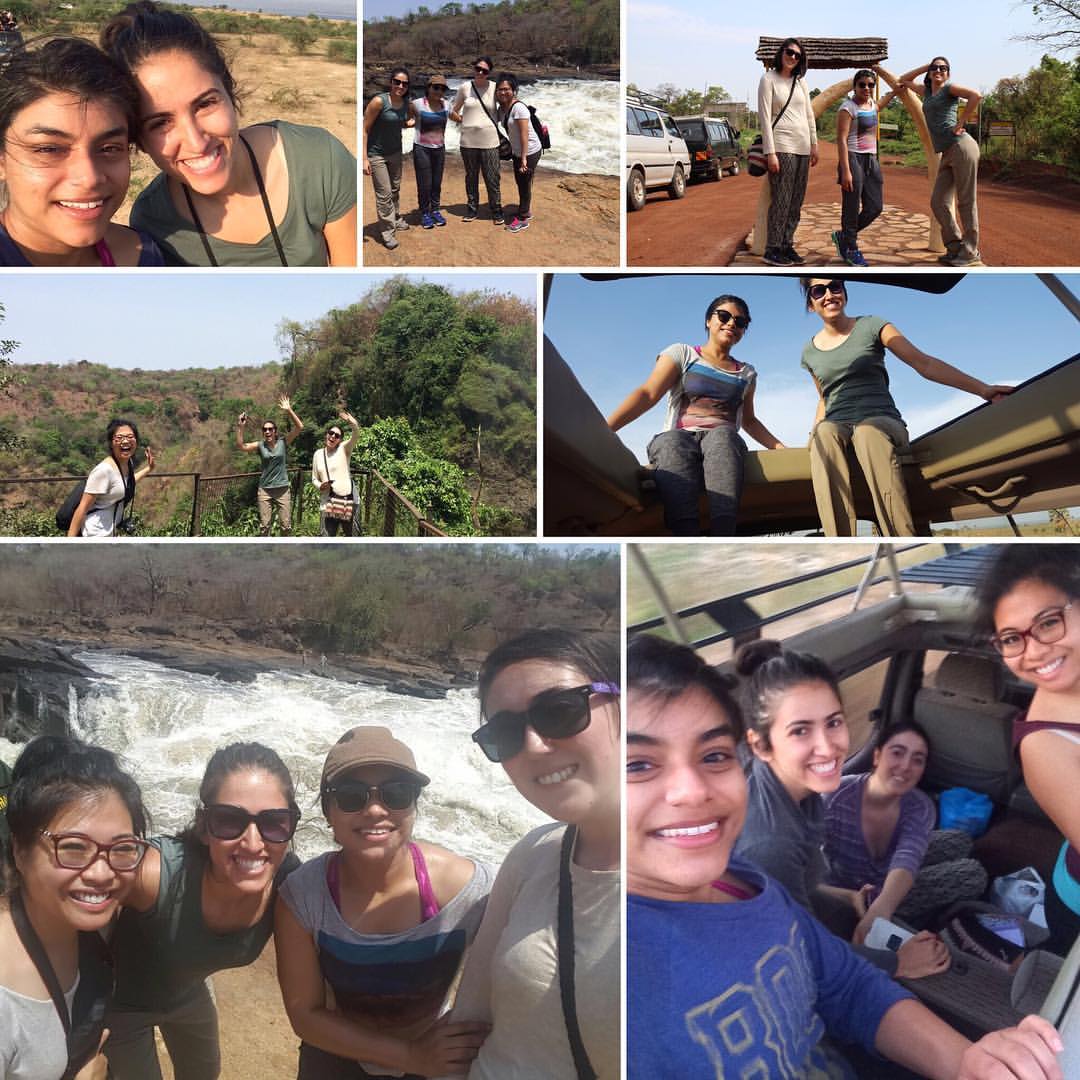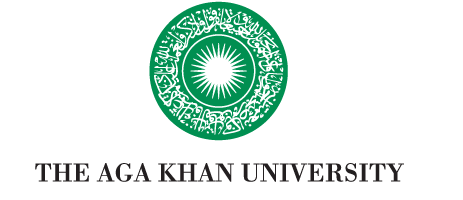Community Health Nursing in Wakiso, Uganda
By Isha Ober

Given the opportunity to pursue community health nursing by collaborating with Aga Khan University – School of Nursing and Midwifery (AKU-SONAM) students on their community projects, I have visited Wakiso district multiple times over the last month. Wakiso district is located in Central Uganda region and comprises of several sub-counties. While conducting nursing community assessment in one such sub-county, I learned about antenatal and postnatal care services offered at the local Wakiso health centre, gained insight into the practice of alternative, traditional [herbal] medicine, and became more knowledgeable about sustainable, capacity-building community interventions.
 The local Wakiso health centre is a district facility that provides perinatal care to mothers and children, during pregnancy and after birth. The facility is designed to hold sixteen laboring women at a given time in the ward and also includes a monitoring room. During my visit, I was told that the Wakiso health centre births 200 babies every month, with approximately 10 babies delivered every day. The facility is equipped to provide antenatal HIV and malaria screening in addition to postnatal infant immunizations. While visiting, I noticed that the two midwives working there seemed unfazed by the growing queue of laboring women outside the facility, who sometimes wait hours to be seen and admitted by a healthcare provider. Despite long wait times, limited medication supplies, and lack of ultrasound and fetal monitoring equipment, I was told that most labors progress without complications. However, both midwives reported being short on resources and alluded to occasional mishaps during complicated births.
The local Wakiso health centre is a district facility that provides perinatal care to mothers and children, during pregnancy and after birth. The facility is designed to hold sixteen laboring women at a given time in the ward and also includes a monitoring room. During my visit, I was told that the Wakiso health centre births 200 babies every month, with approximately 10 babies delivered every day. The facility is equipped to provide antenatal HIV and malaria screening in addition to postnatal infant immunizations. While visiting, I noticed that the two midwives working there seemed unfazed by the growing queue of laboring women outside the facility, who sometimes wait hours to be seen and admitted by a healthcare provider. Despite long wait times, limited medication supplies, and lack of ultrasound and fetal monitoring equipment, I was told that most labors progress without complications. However, both midwives reported being short on resources and alluded to occasional mishaps during complicated births.
The survey done by Tann and colleagues (2007) reveals that although the majority of pregnant women seek perinatal care at a hospital or a public clinic, like the Wakiso health centre, one in every 10 women still deliver their infant at home with no trained assistance in Entebbe, Uganda. This difference surfaced during my interactions with families in one of Wakiso’s sub-counties, who reported delivering at home with traditional birth attendants. Families also spoke of birthing multiple children because they expected only a few of their children to survive post-delivery. Research shows that 54% of the newborns in Eastern Uganda do not receive timely medical care and die away from a health facility, with 47% of the deaths occurring on the day of birth (Waiswa, Kallander, Peterson, Tomson, & Pariyo, 2010). Interestingly, financial and transport limitations are found to be the leading contributors of delay in seeking both antenatal and neonatal care services (Tann et al., 2007; Waiswa et al., 2010). While facilities, like Wakiso health centre, offering antenatal and postnatal services exist, most families lack the education and finances to access them. Furthermore, some of these families instead choose to rely on locally accessible, low-cost traditional herbal remedies for treatment.
One particular mother had shared her concerns about her daughter’s convulsions with us. Previously being treated at Wakiso health centre, the mother was no longer able to afford her daughter’s [biomedical] medications and had resorted to seeking treatment from traditional healers. The mother informed us that she makes her daughter sniff onions and drink herbal tea to prevent convulsions. Bavdekar, Ghule, and Jadhav (2008) mention the similar practice of smelling onions to control convulsions in rural India and emphasize the need to educate parents on appropriate first-aid measures for seizures. Literature shows that most families resort to traditional medicine because of easy accessibility, acceptability, availability, and affordability of herbs in their local communities (Rutebemberwa et al., 2013). The story of this family made me realize that there is a need to be mindful of various socioeconomic and cultural factors that impact health care seeking behavior in communities like Wakiso. It thus becomes important for healthcare providers like myself, to practise in a culturally competent manner by gaining a holistic understanding of how illness is perceived in these communities, in addition to probing pertinent [internal and external] factors that prohibit community members from pursuing treatment course (Geest, 1997; Gerlach, 2012; Kline, Godolphin, Chhina, & Towle, 2013).
 Having explored the provision of healthcare services and health-seeking behavior among community members as part of my nursing assessment in Wakiso sub-county, it was quite fascinating to witness AKU-SONAM students implement their community interventions. Most of their interventions focussed on capacity building and were tailored to the specific needs of the community. Because the community members had identified financial constraints in securing three meals a day, students proposed ways of growing foods like tomatoes, potatoes, fruits, etc. on a small-scale for self-sustenance.
Having explored the provision of healthcare services and health-seeking behavior among community members as part of my nursing assessment in Wakiso sub-county, it was quite fascinating to witness AKU-SONAM students implement their community interventions. Most of their interventions focussed on capacity building and were tailored to the specific needs of the community. Because the community members had identified financial constraints in securing three meals a day, students proposed ways of growing foods like tomatoes, potatoes, fruits, etc. on a small-scale for self-sustenance.
Women were also encouraged to engage in income-generating, small businesses like tailoring, handicrafts and farming, and from neighborhood associations to financially support each other in initiating such businesses. These micro-financing options are not only renowned for directly alleviating poverty by creating sustainable employment opportunities, but are also acclaimed for empowering women (Pronyk, Hargreaves, & Morduch, 2007). Once empowered, women empower other women in their community, thereby becoming agents of social change (Crisp, Swerissen, & Duckett, 2000). Moreover, such micro-financing programs also enable families’ better access to education and nutrition, thereby ultimately improving their state of health and quality of life (Pronyk et al., 2007).
It was very inspiring and insightful working with AKU-SONAM students in Wakiso district; the community experience not only made me more informed about tribulations facing families in Wakiso but also granted me an appreciation for implementing sustainable, capacity-building community interventions.
References:
Bavdekar, S., Ghule, R., & Jadhav, S. (2008). Healthcare-seeking behavior after seizures in children. Indian journal of medical sciences, 62(8), 331.
Crisp, B. R., Swerissen, H., & Duckett, S. J. (2000). Four approaches to capacity building in health: consequences for measurement and accountability. Health promotion international, 15(2), 99-107.
Geest, S. (1997). Is there a role for traditional medicine in basic health services in Africa? A plea for a community perspective. Tropical Medicine & International Health, 2(9), 903-911.
Gerlach, A. J. (2012). A critical reflection on the concept of cultural safety. Canadian Journal of Occupational Therapy, 79(3), 151-158.
Kline, C. C., Godolphin, W. J., Chhina, G. S., & Towle, A. (2013).
Community
as Teacher Model: Health Profession Students Learn Cultural Safety from an Aboriginal Community. Michigan Journal of Community Service Learning, 20(1), 5-17.
Pronyk, P. M., Hargreaves, J. R., & Morduch, J. (2007). Microfinance programs and better health: prospects for sub-Saharan Africa. JAMA, 298(16), 1925-1927.
Rutebemberwa, E., Lubega, M., Katureebe, S. K., Oundo, A., Kiweewa, F., & Mukanga, D. (2013). Use of traditional medicine for the treatment of diabetes in Eastern Uganda: a qualitative exploration of reasons for the choice. BMC international health and human rights, 13(1), 1.
Tann, C. J., Kizza, M., Morison, L., Mabey, D., Muwanga, M., Grosskurth, H., & Elliott, A. M. (2007). Use of antenatal services and delivery care in Entebbe, Uganda: a community survey. BMC pregnancy and childbirth, 7(1), 23.
Waiswa, P., Kallander, K., Peterson, S., Tomson, G., & Pariyo, G. W. (2010). Using the three delays model to understand why newborn babies die in eastern Uganda. Tropical medicine & international health, 15(8), 964-972.

